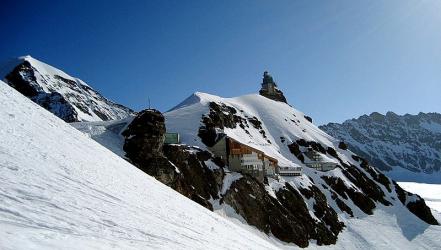Atmospheric circulation changes identified
Thanks to ground-based FTIR monitoring of hydrogen chloride (HCl)
Monitoring the success of the Montreal Protocol on substances that deplete stratospheric ozone is one of the primary tasks of the NDACC network. Among the various techniques involved, giving access to numerous relevant parameters, the ground-based FTIR instruments contribute significantly by providing total and partial columns of key tropospheric and stratospheric constituents. Indeed, high-resolution solar infrared spectra contain the signatures of a suite of halogenated organic source gases. The current list includes CFC-11, CFC-12, HCFC-22, HCFC-142b, CCl4, CF4, SF6 (e.g., Krieg et al., 2005; Zander et al., 2008; Rinsland et al., 2012; Mahieu et al., 2013a; Mahieu et al., 2014a) and efforts are ongoing to expand this list. In addition, the respective evolutions of the inorganic chlorine and fluorine loadings in the stratosphere are also accessible to this technique through observations of the main reservoirs, i.e. hydrogen chloride (HCl) and chlorine nitrate (ClONO2), hydrogen fluoride (HF) and carbonyl fluoride (COF2). Time series and trends of all these species have been reported and analyzed in successive studies, notably allowing characterizing from the ground the rapid increase of inorganic chlorine (Cly) in the Earth’s stratosphere (e.g., Zander et al., 1987; Rinsland et al., 1991, 1996; Reisinger et al., 1995), following large emissions of anthropogenic halogenated source gases during the 1970s to 1990s. Later, studies involving several NDACC ground-based FTIR stations provided evidence for a stabilization of HCl and ClONO2 around the mid-1990s (Rinsland et al., 2003), and then a near-global characterization of the Cly decrease at rates close to 1%/yr in both hemispheres at 17 sites between 80oN and 78°S (Kohlhepp et al., 2012).
Read more of Mahieu 2015...
